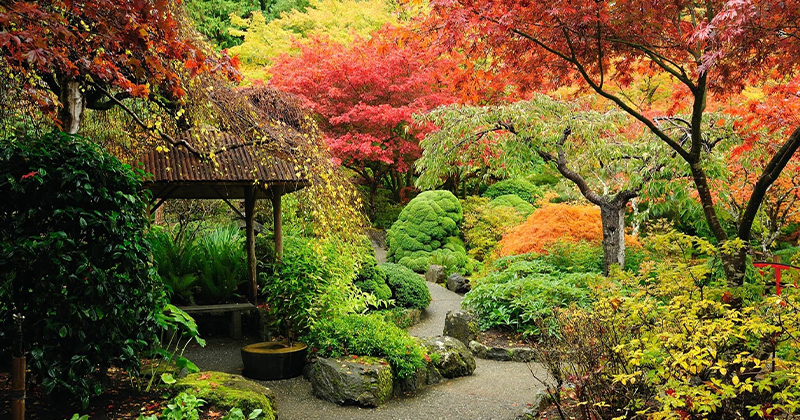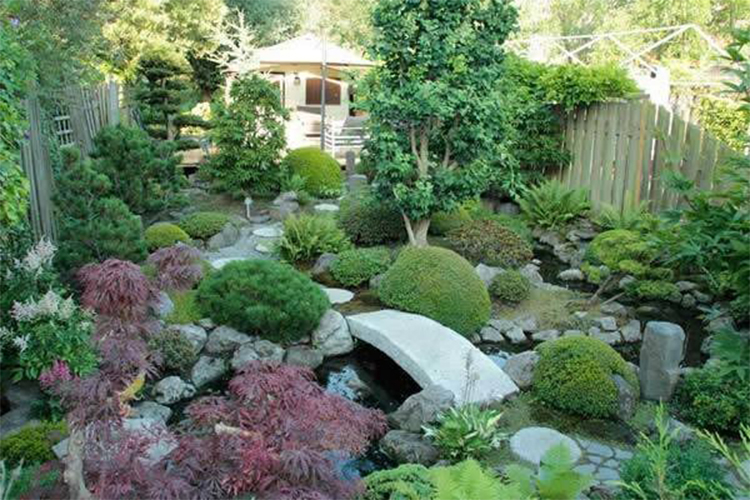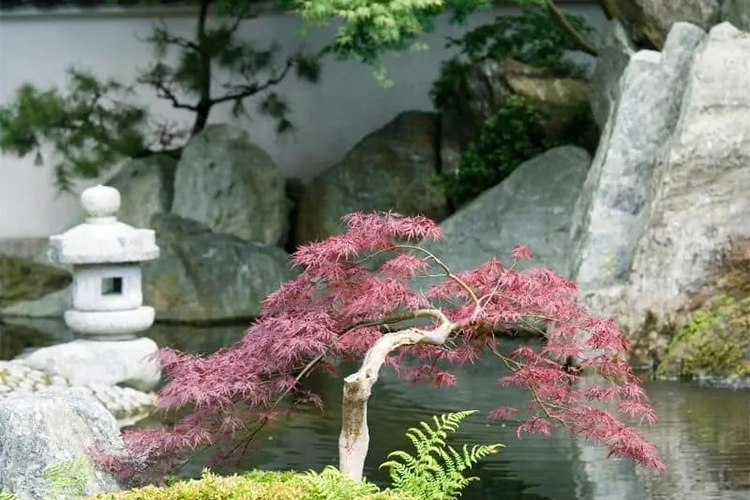
What to Grow in a Japanese Garden.
Japanese gardens are renowned for their serene beauty and tranquil ambiance. They incorporate a variety of elements, such as rocks, water, and plants, to create a peaceful and harmonious space. While there are many plants that can be used in a Japanese garden, some are better suited than others. In this article, we will discuss the best plants for a Japanese garden.

Japanese Maple (Acer palmatum)
One of the most iconic plants in a Japanese garden is the Japanese maple. This small tree or large shrub has delicate, lacy leaves that come in a range of colors, from bright green to deep red. Japanese maples are particularly stunning in the fall when their leaves turn vibrant shades of orange, red, and gold. They are often used as a focal point or specimen plant in a Japanese garden.
Bamboo (Bambusa spp.)
Bamboo is a quintessential plant in Japanese gardens. Its tall, slender stalks and delicate leaves give it a graceful, elegant appearance. In addition to its aesthetic appeal, bamboo is also functional in a Japanese garden. It can be used to create privacy screens or windbreaks, and it also produces a calming sound as the wind rustles through its leaves.
Azalea (Rhododendron spp.)
Azaleas are a popular choice for Japanese gardens because of their vibrant, showy flowers. They come in a range of colors, from pink and purple to white and red. Azaleas typically bloom in the spring, adding a burst of color to the garden after a long winter. They are often planted in groups to create a mass of color.
Japanese Black Pine (Pinus thunbergii)
The Japanese black pine is a hardy tree that is native to Japan. It has dark green needles and a unique, twisted form that gives it a sculptural quality. Japanese black pines are often pruned and trained into interesting shapes, such as bonsai trees or cloud trees. They are also used to provide structure and texture in a Japanese garden.
Japanese Snowbell (Styrax japonicus)
The Japanese snowbell is a small, ornamental tree that produces fragrant, bell-shaped flowers in the spring. The flowers are usually white or pink and hang in clusters from the branches. In addition to its attractive flowers, the Japanese snowbell also has glossy, dark green leaves that turn yellow in the fall.

Japanese Wisteria (Wisteria floribunda)
Japanese wisteria is a climbing vine that produces cascading clusters of fragrant, purple or white flowers in the spring. It can be trained to grow on a trellis, pergola, or other structure, creating a dramatic focal point in the garden. However, it is important to note that Japanese wisteria can be invasive, so it should be planted with care.
Hosta (Hosta spp.)
Hostas are a popular choice for Japanese gardens because of their lush, green foliage. They come in a range of sizes and shapes, from tiny, compact plants to large, spreading varieties. Hostas are often used to create a sense of tranquility and calmness in the garden, and they are also effective at filling in gaps between other plants.
Iris (Iris spp.)
Iris is another plant that is often used in Japanese gardens. Its elegant, sword-shaped leaves and delicate, colorful flowers make it a beautiful addition to any garden. Irises come in a range of colors, from blue and purple to yellow and white. They are often planted in groups near water features, such as ponds or streams.
Japanese Forest Grass (Hakonechloa macra)
Japanese forest grass is a low-growing grass that has a beautiful, cascading form and a bright green color. It is often used as a ground cover or as a border plant in a Japanese garden. Its graceful, arching form adds movement and texture to the garden, and it looks particularly stunning when planted near rocks or water features.
Camellia (Camellia japonica)
Camellias are a beautiful and versatile plant that can be used in a variety of ways in a Japanese garden. They produce large, showy flowers in shades of pink, red, and white, which bloom in the winter and early spring. Camellias can be planted as a specimen plant or in groups to create a mass of color. They can also be used as a hedge or a screen.
Japanese Anemone (Anemone hupehensis)
Japanese anemone is a beautiful, herbaceous perennial that produces delicate, pink or white flowers in the late summer and early fall. Its tall, slender stalks and delicate flowers make it a lovely addition to any Japanese garden. Japanese anemones are often planted near water features, such as ponds or streams, where they can be reflected in the water.

Japanese Blood Grass (Imperata cylindrica 'Red Baron')
Japanese blood grass is a striking, ornamental grass that has bright red leaves. It is often used as a border plant or as a specimen plant in a Japanese garden. Its vibrant color adds a bold splash of red to the garden, and it looks particularly stunning when planted near rocks or water features.
Japanese Kerria (Kerria japonica)
Japanese kerria is a deciduous shrub that produces bright yellow flowers in the spring. It has a graceful, arching form and a delicate, airy quality that makes it a lovely addition to any Japanese garden. Japanese kerria is often used as a border plant or as a specimen plant.
Japanese Spurge (Pachysandra terminalis)
Japanese spurge is a low-growing ground cover that has glossy, dark green leaves. It is often used to fill in gaps between other plants or as a border plant in a Japanese garden. Japanese spurge is particularly effective at creating a sense of unity and cohesion in the garden, and it looks particularly stunning when planted near rocks or water features.
Japanese Sweet Flag (Acorus gramineus)
Japanese sweet flag is a low-growing, grass-like plant that has variegated leaves in shades of green and yellow. It is often used as a ground cover or as a border plant in a Japanese garden. Its delicate, arching form adds movement and texture to the garden, and it looks particularly stunning when planted near rocks or water features.
In conclusion, there are many plants that can be used in a Japanese garden, but some are better suited than others. The plants listed above are all excellent choices for a Japanese garden, and they will help create a serene and harmonious space. Whether you are looking for a specimen plant, a ground cover, or a border plant, there is a plant on this list that will suit your needs. By incorporating these plants into your Japanese garden, you will be able to create a space that is both beautiful and tranquil.
trending now
Quick Links:
join the club
Categories:
COPYRIGHT © 2025 HOME ON THE GROVE.
